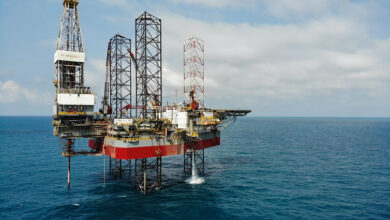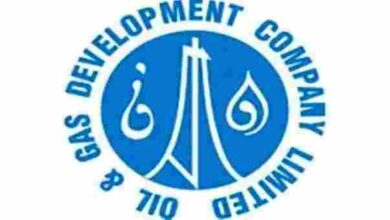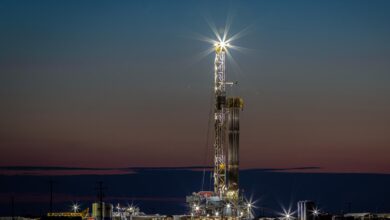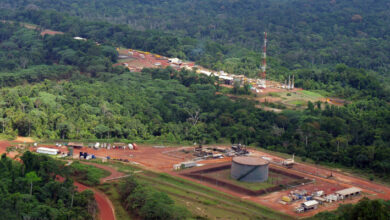Q&A’s with UK, Norwegian regulators

UK Health and Safety Executive: Susan Mackenzie
DC: As head of the UK Heath and Safety Executive (HSE) Energy Division, what goals do you have for the coming years?
Mackenzie: The health and safety priorities for the offshore industry are set out in our recently published strategy. It emphasizes the importance of controlling major accident risks by controlling hydrocarbon releases (HCRs) and ensuring the structural integrity of installations. Major hazards like oil and gas extraction require constant vigilance. We have traditionally focused on the operators of installations, but in UK waters, contractors employ around 85% of the workforce. Our strategy aims to ensure that all those with influence over the conditions to which workers are exposed contribute to ensuring risks are properly controlled.
Our strategy aims to ensure that senior industry leaders take responsibility for the control of major accident risks offshore. None of this is new to the industry; it is about making sure that common, well-understood precautions and procedures are in place and working as they should.
HSE will be targeting its inspections on inherent hazards. We want to make the greatest impact where it is most needed.
We also have to be clear that legislation on its own will not deliver the sort of safety culture the industry needs. This requires leadership to ensure that risk management is embedded within the industry longer term, no matter where the work is carried out. In this area, we as regulators have to have a strong influencing role rather than just being an enforcer.
DC: What notable milestones have industry or regulators reached in terms of safety in the past year or two?
Mackenzie: The industry has recognized the importance of controlling HCRs and challenged itself to reduce them. By April 2013, it had almost achieved its target of reducing releases by 50%. It undertook a goal to achieve a further 50% reduction by 2016, but at the end of 2013, HCRs had risen by 30% compared with an equivalent period in 2012. The industry should respond to the challenge it set for itself.
The industry has also responded to the challenge of KP4. It is much more focused on the issue of aging and life extension (ALE). HSE recently published its KP4 report into ALE, which found that there is still plenty of work to be done. HSE made it clear that if installations are going to be used beyond their original design life, operators must anticipate the possible consequences and put in place policies and procedures to deal with them. Age of an installation alone is not a reliable indicator of its condition, and ALE must be approached as a distinct activity within operators’ asset integrity management plans.
It is likely that there will be greater demands placed on aging installations, and operators must ensure that ALE processes are integrated into their long-term strategies. This means that, as well as managing the immediate risks from asset integrity and HCRs, the industry needs to develop leading indicators to demonstrate that necessary control measures are in place and working. Simply measuring failure is not good enough.
DC: The HSE Energy Division regulates risks to health and safety arising from activity on the UK Continental Shelf. What is your strategy to ensure these objectives are met?
Mackenzie: Our overarching philosophy is that those who create risks are responsible for managing and controlling them. Our approach to regulating the risks offshore is set out in our strategy, developed in consultation with industry. It provides a framework for HSE and industry to follow.
DC: Do you believe the offshore E&P industry is capable of self-regulation? What are the major challenges?
Mackenzie: The British regime does not ask for self-regulation but does demand the risks are properly controlled and managed as enshrined in an operator’s safety case. At the IADC conference in Vienna in June, industry experts discussed this issue. The consensus was that industry performance had a long way to improve before there could be any reduction in the regulatory regime. Proper control of risks depends on leadership. When there is consistently good leadership across all of the industry, that might be the time to think if any form of self-regulation would be appropriate.
To become self-regulating, the industry needs to be able to show that it has fully effective risk control measures in place and that it can demonstrate that these controls are effective across all the industry – not just the best performers.
For drillers, that means having clear measures of actual performance, e.g., demonstrably lower rates of HCRs but also leading indicators to demonstrate that performance will be sustained. This would mean collecting data consistently from all drillers and reporting regularly to both the public and the workforce. Getting to this level of consistent performance measurement will require considerable leadership and cooperation from across industry senior managers.
However, self-regulation or not, I want to see an industry that has an improved suite of leading and lagging indicators to demonstrate performance, that these are available for scrutiny by my inspectors, the workforce and industry leaders. This will allow people to share learnings and drive improvements. So, working to deliver the existing strategy and working toward self-regulation do not conflict in any way.
DC: What impact do you anticipate from the EU Offshore Safety Directive?
Mackenzie: At present, the UK Department of Energy and Climate Change (DECC) and HSE’s implementation teams are analyzing the Offshore Directive before beginning to draft new regulations or legislative amendments. There will be a full consultation on the proposals. The teams have identified several main differences between the Offshore Directive and the existing UK offshore safety and environmental regime:
• The creation of an independent offshore competent authority;
• Integrating the management of safety and environmental risks, which impacts the safety case, well notification, independent verification scheme and well examination requirements;
• Introduction of independent verification for environmental critical elements;
• Requirements for the production of a corporate major accident policy;
• New requirements on liability for environmental damage;
• Duties on operators to report a range of new incidents and dangerous occurrences to the competent authority;
• Duties on operators registered in the member states to report major accidents that occur outside of Europe;
• Requirements on the competent authority to report a range of information, including the findings of their major accident investigations, to the European Commission; and
• Requirements on the competent authority to share additional information on transboundary emergency response.
There are also transitional arrangements covering existing installations and wells.
We will be looking to mesh as many of the directive’s requirements as possible with our current offshore safety and environmental regimes. We are also considering simplifications and improvements, opportunities to consolidate or reduce the stock of offshore legislation, and extending UK requirements to cover new emerging energy technologies.
DC: Several post-Macondo reports have been written. What have been the major lessons learned?
Mackenzie: Under the independent Maitland review, the main recommendations for HSE were:
• To establish more formal mechanisms to ensure more integrated and coordinated working between DECC and HSE, either by further developing the DECC/HSE Memorandum of Understanding or creating a joint competent authority. The latter is similar to the proposed European regulation on offshore oil and gas. HSE is working with DECC on this; and
• To address recruitment and retention issues affecting offshore specialists within HSE’s Offshore Division. I believe we now have salaries that are at least comparable with those offered by industry. I want to make sure that we make it clear HSE can be a great place to work. There are tremendous opportunities for committed people to have a positive impact on their industry. I am starting a project to make sure we are making the benefits of HSE clear to the relevant people. This project also will be looking at how we make sure that once we have recruited specialists, we use them in the best way possible.

Petroleum Safety Authority Norway: Anne Myhrvold
DC: You recently celebrated your first anniversary as Director General of the Petroleum Safety Authority (PSA) Norway. With a full year under your belt, what goals or expectations have you been able to meet?
Myhrvold: The first year has been about getting into the role. I’ve used the time to get to know the organization and meet with the industry and unions to get to know each other. With my background, having worked with BP for 11 years, I feel like I know the industry. I know the importance of working safely and having the systems in place.
DC: The Director General role is a six-year term. What is your plan for the next five years?
Myhrvold: I think the organization here is working quite well, so there hasn’t been a need for any big changes. I will build further on the existing organization and develop it to be able to contribute and to still have a good safety level on the Norwegian Continental Shelf. We see that the industry is serious, and I think we have a good regulation system. We have a good system for doing audits and good relationships with the unions and the industry. Of course, this doesn’t mean everything is perfect. We still have to improve continuously.
I think both regulators and the industry need to develop and continually improve the system. I believe in small changes and building on successes; that will help us to stay on top of the work that is going well. I’m not sure if this comes across the same way in English, but I like to say that HSE has to be fresh. It doesn’t help looking back on history.
DC: What would be some of your top priorities at PSA?
Myhrvold: One of our main priorities at PSA is addressing major accident risk and looking into what the management at different companies are doing to prevent major accidents and to understand the risk. Looking forward, I think that will be a priority for us in the coming years.
We will be evaluating what we have in place and what are the most critical areas that the industry and ourselves have to work with. We’ll have to make sure we communicate those main priorities and get the message out to the industry.
This year we made a new priority related to the Far North and Arctic area to be sure that the industry understands the need to develop good solutions for safe and sustainable work in the Far North.
DC: What are some of the major roadblocks to ensuring sustainable HSE performance in Norwegian waters?
Myhrvold: Actually I think the situation is quite good. We measure the HSE trend each year, and the results from our work show the indicators are quite good. One challenge might be that we will relax and say this is good enough. But we need to look forward and be active to further reduce the risk, accidents and incidents. Another important area is that several major companies have cost-cutting initiatives. I would like to ensure they are still doing good work to improve HSE results even in periods when they need to cut costs. That is quite important.
DC: PSA regulates technical, operational, safety and emergency preparedness in the work environment. How does PSA ensure all of these objectives are met?
Myhrvold: We are very clear that it’s the operators’ and other companies’ responsibility to ensure that they meet the regulations. We work to get a view of the status of their work, like getting data from the industry and measuring trends so we have a good risk picture each year. But the responsibility is very clear toward the industry.
DC: So is the offshore E&P industry capable of self-regulation?
Myhrvold: The system that has been built in Norway for years shows that a lot of things are functioning well. The industry takes the responsibility, and the unions and companies and authorities have good and healthy discussions to ensure that we share the same goals. Of course, we follow up through our supervisory activities and audits.
DC: How close to self-regulation do you believe the industry is?
Myhrvold: That’s quite a difficult question. They are not at all self-regulated; they are regulated by the authorities. But they are given a great deal of responsibility and trust that is vital.
DC: What further steps can the industry take to achieve self-regulation?
Myhrvold: They need to have a safety management system in place, and they must have competent people working to understand what needs to be addressed. The way they are working is along those lines.
DC: All eyes are on the Arctic. Last year the opening of the southeast Barents Sea was approved. How is the PSA preparing for this?
Myhrvold: As I said, this is one of our main priorities. We are working internally to understand the challenges and gaps that might be here in order to have safe operations. Externally we are talking with the industry to ensure that they work together to understand the gaps and the needs to have a good safety system. There is an ongoing program under the Norwegian Oil and Gas Association that could – together with union representatives, the industry and PSA – go through the different challenges. These include: What do we do with long-distance logistics? The cold weather? The darkness? The weather and ice? The program has been going on for a couple of months now, and they are identifying the challenges and the possible measures that need to be put in place.
DC: The EU Offshore Safety Directive will soon be considered by EU members states. What impact do you anticipate?
Myhrvold: The Norwegian government has said that the EU directive is not applicable for Norway. At the moment, we are following the activities in the EU countries, and we have participated in different work groups as an observer, but we are not at this moment dealing with the directive.
DC: Norway has written several post-Macondo reports. What impact have those reports had?
Myhrvold: The need to learn after major accidents is crucial for the industry. It has been helpful for the industry to get such a report showing the links of the learnings from Macondo with the Norwegian system. Two reports were published, and they were written to address the need to understand the learnings and to get the improvements from the different topics.
DC: What are your views on oil and gas regulations post-Macondo?
Myhrvold: I think there is still a need to have global cooperation between the regulators and to be sure that we exchange our experiences with the work that we are doing. It’s a common challenge to reduce risks and to have a safe offshore E&P industry. To be able to speak to each other and exchange experiences is still vital.
The International Regulators’ Forum is an important arena. It allows us to see different systems and different ways to approach the industry but still have the same goal.
Click here to access the UK HSE’s recently published strategy emphasizing the importance of controlling major accident risks.




